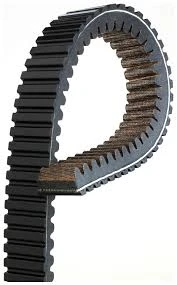- Arabic
- French
- Russian
- Spanish
- Portuguese
- Turkish
- Armenian
- English
- Albanian
- Amharic
- Azerbaijani
- Basque
- Belarusian
- Bengali
- Bosnian
- Bulgarian
- Catalan
- Cebuano
- Corsican
- Croatian
- Czech
- Danish
- Dutch
- Afrikaans
- Esperanto
- Estonian
- Finnish
- Frisian
- Galician
- Georgian
- German
- Greek
- Gujarati
- Haitian Creole
- hausa
- hawaiian
- Hebrew
- Hindi
- Miao
- Hungarian
- Icelandic
- igbo
- Indonesian
- irish
- Italian
- Japanese
- Javanese
- Kannada
- kazakh
- Khmer
- Rwandese
- Korean
- Kurdish
- Kyrgyz
- Lao
- Latin
- Latvian
- Lithuanian
- Luxembourgish
- Macedonian
- Malgashi
- Malay
- Malayalam
- Maltese
- Maori
- Marathi
- Mongolian
- Myanmar
- Nepali
- Norwegian
- Norwegian
- Occitan
- Pashto
- Persian
- Polish
- Punjabi
- Romanian
- Samoan
- Scottish Gaelic
- Serbian
- Sesotho
- Shona
- Sindhi
- Sinhala
- Slovak
- Slovenian
- Somali
- Sundanese
- Swahili
- Swedish
- Tagalog
- Tajik
- Tamil
- Tatar
- Telugu
- Thai
- Turkmen
- Ukrainian
- Urdu
- Uighur
- Uzbek
- Vietnamese
- Welsh
- Bantu
- Yiddish
- Yoruba
- Zulu
nov. . 08, 2024 23:38 Back to list
OEM Timing Belt Options for Honda Vehicles and Their Benefits
Understanding OEM Timing Belts for Honda Vehicles
When it comes to maintaining a Honda vehicle, one of the most critical components to consider is the timing belt. The timing belt is an essential part of your engine that helps maintain the synchronization between the crankshaft and camshaft, allowing the engine's valves to open and close at the correct times during each cylinder's intake and exhaust strokes. This synchronization is vital for optimal engine performance, efficiency, and longevity. In this context, Original Equipment Manufacturer (OEM) timing belts deserve special attention for Honda owners.
What is an OEM Timing Belt?
An OEM timing belt is a timing belt that is manufactured by the same company that produced the original equipment for the vehicle. For Honda vehicles, this means that the OEM timing belt is designed specifically to meet the stringent quality and performance standards set by Honda. Using an OEM timing belt ensures that you are getting a product that has been rigorously tested and designed to fit perfectly with your vehicle's engine.
Why Choose OEM Timing Belts?
1. Quality Assurance OEM timing belts are made from high-quality materials that are tested for durability and performance. These belts are engineered to withstand the high temperatures and pressures found in an operating engine. Aftermarket belts, while often cheaper, may not offer the same level of reliability.
2. Perfect Fit Since OEM timing belts are designed for specific Honda models, they provide a precise fit. This reduces the risk of premature wear or failure caused by misalignment or incompatibility with other engine components.
oem timing belt for honda

3. Warranty Coverage Many OEM timing belts come with warranties that guarantee their performance and durability. If an OEM timing belt fails prematurely, you often have recourse for repairs or replacements under warranty.
4. Manufacturer’s Recommendations Honda recommends specific maintenance schedules for timing belt replacement based on vehicle mileage and other factors. Following these guidelines with OEM parts helps ensure your vehicle operates as intended and can help maintain its resale value.
Signs Your Timing Belt Needs Attention
Even with the best maintenance practices, timing belts can wear out over time. It's essential to keep an eye out for any signs that your timing belt may need replacement, including
- Engine Noise A knocking or clicking sound from the engine bay can indicate that the timing belt is wearing down or has become loose. - Engine Performance Issues If you notice a decrease in engine acceleration or unusual fluctuations in power, it may be related to timing belt issues. - Visible Damage Inspecting the timing belt for signs of fraying, cracking, or any visible wear can provide insights into its condition.
Conclusion
Investing in an OEM timing belt for your Honda is a wise decision that can protect your engine and enhance vehicle performance. While the upfront cost may be higher than aftermarket options, the long-term benefits—including durability, reliability, and peace of mind—make OEM timing belts a worthwhile investment. Always refer to your Honda owner's manual for specific maintenance recommendations and consult with a certified mechanic to ensure you’re making the right choices for your vehicle. By prioritizing quality and adhering to manufacturer guidelines, you can extend the life of your Honda and enjoy a smoother driving experience.
-
Korean Auto Parts Timing Belt 24312-37500 For Hyundai/Kia
NewsMar.07,2025
-
7PK2300 90916-T2024 RIBBED BELT POLY V BELT PK BELT
NewsMar.07,2025
-
Chinese Auto Belt Factory 310-2M-22 For BMW/Mercedes-Benz
NewsMar.07,2025
-
Chinese Auto Belt Factory 310-2M-22 For BMW/Mercedes-Benz
NewsMar.07,2025
-
90916-02660 PK Belt 6PK1680 For Toyota
NewsMar.07,2025
-
drive belt serpentine belt
NewsMar.07,2025

